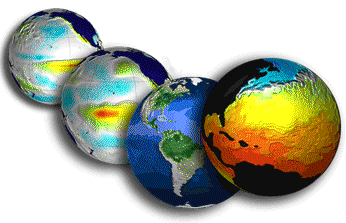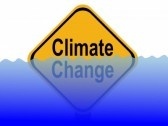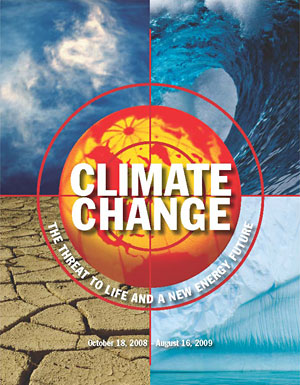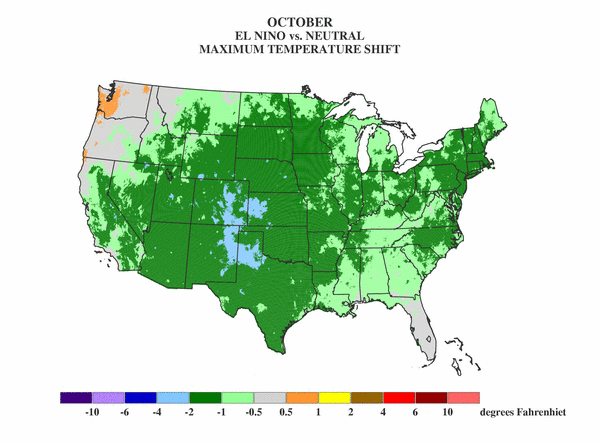|
|
 Climate Climate
What is Climate?
Climate is the average weather
usually taken over a 30-year time period for a particular region and time
period. Climate is not the same as weather, but rather, it is the average
pattern of weather for a particular region. Weather describes the short-term
state of the atmosphere.

What is our climate system?
| Atmosphere |
The atmosphere covers the Earth.
It is a thin layer of mixed gases which make up the air we breathe. This thin
layer also helps the Earth from becoming too hot or too cold. |
| Oceans |
Oceans cover about 70 percent of
Earth's surface. Their large size and thermal properties allow them to store a
lot of heat. |
| Land |
Land covers 27 percent of Earth's
surface and land topography influences weather patterns. |
| Ice |
Ice is the world's largest supply
of freshwater. It covers the remaining 3 percent of Earth's surface including
most of Antarctica and Greenland. Ice plays an important role in regulating
climate, because it is highly reflective. |
| Biosphere |
The biosphere is the part of
Earth's atmosphere, land, and oceans that supports any living plant, animal, or
organism. It is the place where plants and animals, including humans,
live. |
What does the oceans have effect on Earth's climate?
As the ocean absorbs the heat emitted from the sun and then latter spread it around the
world in currents. These currents from oceans and in some regions the wind driven rivers in the sea that heat or cool the
air above them, creating hotter or cooler weather.
What is a Climate Change?

 Climate is the long-term average of a region's weather events lumped together.
For example, it's possible that a winter day in Buffalo, New York, could be sunny and mild, but the average weather – the climate – tells us that Buffalo's winters will mainly be cold and include snow and rain.
Climate change represents a change in these long-term weather patterns.
They can become warmer or colder. Annual amounts of rainfall or snowfall can increase or decrease.
Climate is the long-term average of a region's weather events lumped together.
For example, it's possible that a winter day in Buffalo, New York, could be sunny and mild, but the average weather – the climate – tells us that Buffalo's winters will mainly be cold and include snow and rain.
Climate change represents a change in these long-term weather patterns.
They can become warmer or colder. Annual amounts of rainfall or snowfall can increase or decrease.
What is El Niño?
El Niño is a climate pattern where the water
in the Pacific Ocean near the equator gets hotter than usual and affects the
atmosphere and weather around the world. El Niño climate conditions
occur every few years, and they are not predictable. El Niño is Spanish
for The Little Boy. It refers to the Christ child and was named by Mexican
fisherman, who noticed the climate pattern often formed around
Christmastime.

What type of a climate pattern do we see with an El Niño?
The climate pattern can change the
weather of the United States, particularly in California and the southern
states. Usually, El Niño brings more rain and higher temperatures. Also,
warm ocean currents come farther north and all kinds of tropical fish can be
caught in the waters far north along the United States West Coast. El
Niño may also bring warmer than normal winter temperatures to the
eastern part of the United States.
|